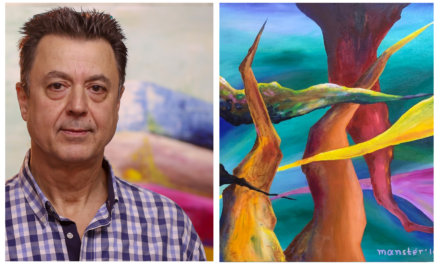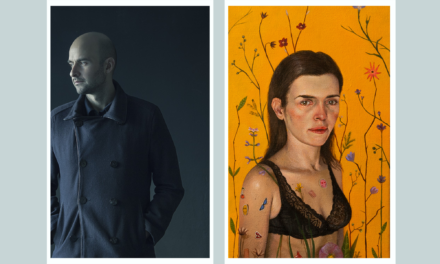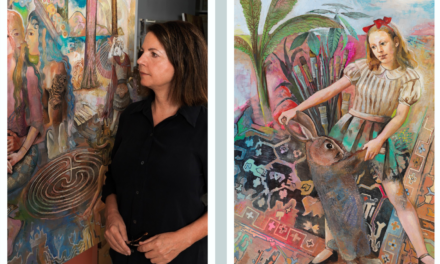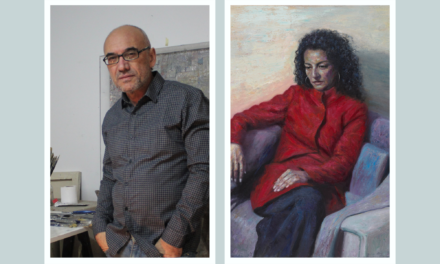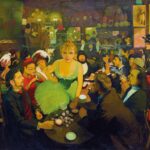Manousos Manousakis’ work is deeply layered and symbolic. His incredibly intricate compositions allude to dystopian visions and hauntingly alive worlds. His main medium is ink on paper used with incredible precision in order to depict surreal worlds including labyrinths, hybrid creatures and collapsing architectures. His art evokes a sense of unease, but also wonder, revealing landscapes that seem both ancient and futuristic, mechanical yet alive.
Manousos Manousakis was born in Chania in 1997. He studied at the School of Fine Arts of the University of Ioannina, where he completed his master’s degree on the subject “Art and Public Space.” His work has been awarded and presented at Greek and international animation festivals. His artistic production consists of ink drawings on paper featuring complex figures and dystopian scenarios, which he often digitizes and transforms into short video animations to add movement and depth.

In his interview with Greek News Agenda*, Manousos Manousakis reflects on his artistic journey and the intricate, symbolic worlds he creates. He also discusses the influences that guide him, the balance between spontaneity and control in his compositions, and the unique ways audiences—both children and adults—respond to his art.
Your compositions are extremely dense and detailed. Is there any room for spontaneity during the creative process?
Before I begin a complex composition, an initial visual exploration around the theme of the project has already taken place. I already have a general visual framework for the piece, and I usually have an idea of what certain characters will look like. However, most of the smaller compositions — and by extension the final form— are built gradually.
From that point on, the creative process begins. In the beginning, that is the conception of the forms, there is a great deal of experimentation with pencil on paper. Ink is applied only once I have fully decided what I want a form to be. This stage combines spontaneity and control: on the one hand, forms emerge largely spontaneously, often without me being able to explain why something feels right or wrong. On the other hand, I will never ink something that does not satisfy me; I will redraw it again and again until it “clicks.”
When a good composition may appear and how many attempts it will take to achieve this is rather unpredictable. It is always related to the artistic explorations that have already taken place. What ultimately remains in the work is a fully conscious choice. My compositions come together to tell a larger story. So, while I begin with a general idea, it is through artistic experimentation that I gradually come to understand what the work truly wants to communicate. In fact, the conceptual dimension matures slowly as the piece evolves over months.
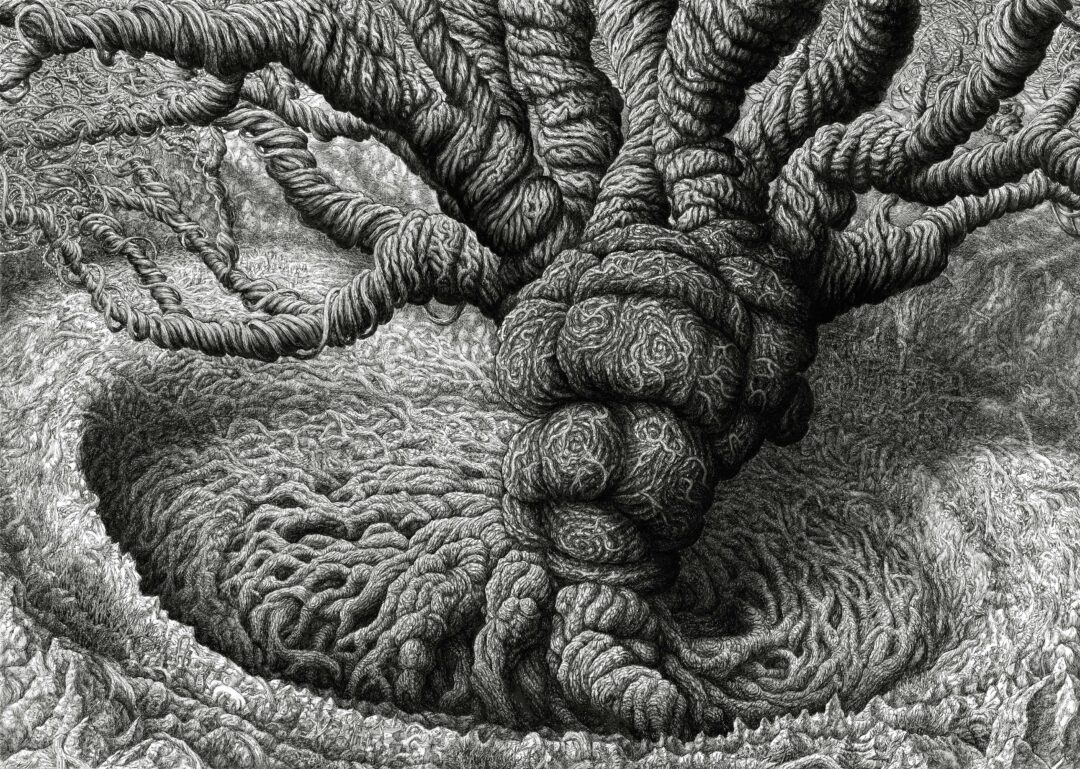
In your works, do you see more of yourself or the world around us?
I believe that in every work the artists inevitably reveal themselves. However, I never consciously try to depict myself. I have created only two self-portraits, and even those began as a personal challenge, simply because I had never attempted it before.
I see myself more as an observer of the worlds I create — worlds shaped through my perceptions and the “rules” I set for them. Just as a director arranges a scene without appearing in it, yet expresses their personal viewpoint through it, I am also present in my creations in an indirect way.
You create dystopian worlds, hybrid beings, and a peculiar kind of architecture. What draws you to these alternative realities?
When I decided to create a dystopian, “frightening” world, one core principle guided me: I did not want fear to come from an external threat — a monster, for instance — but from our own nature, our mind, our mortality, and the social systems we construct. Over time, I realized that what interested me most was not fear itself, but the uncanny — that unsettling feeling that arises when something familiar becomes distorted.
Through deconstructing the human form and merging it with elements from animals, plants, or objects, characters emerged who could be comic, tragic, or frightening. But I never wanted to force a specific emotion on the viewer. That’s why the term I use to describe my work now is “deconstruction”: the deconstruction of the outward image shaped both personally and socially. This is how worlds are born where every pretentious façade collapses and characters appear in their fully absurd and tragicomic nature.
What is the place of the human figure within your artistic universe?
Human beings take center stage, since these worlds revolve around them. The characters — no matter how strange or hybrid they become — always retain human features so they can communicate with the viewer. At the same time, the human figure is always portrayed as vulnerable and powerless in the face of the forces acting upon it, whether these stem from mortality or from the social systems we build.

Which artists have influenced you?
Each piece is influenced to varying degrees by different artists, but there are some I return to repeatedly. Among Japanese creators, Kentaro Miura made me fall in love with inking and showed me, through his technique, how a world can be fully rendered with it. His depiction of demons and monsters greatly inspired me. Junji Ito also opened new perspectives, making me reconsider the nature of fear.
Among European artists, I often revisit Beksiński’s work, admiring how he deconstructed the human figure and intertwined it with plant-like forms and architectural elements. I also love Giger’s dystopian compositions and the harmony of his forms. And of course, a constant influence is Hieronymus Bosch — for his medieval themes, intricate compositions, and remarkable timelessness.
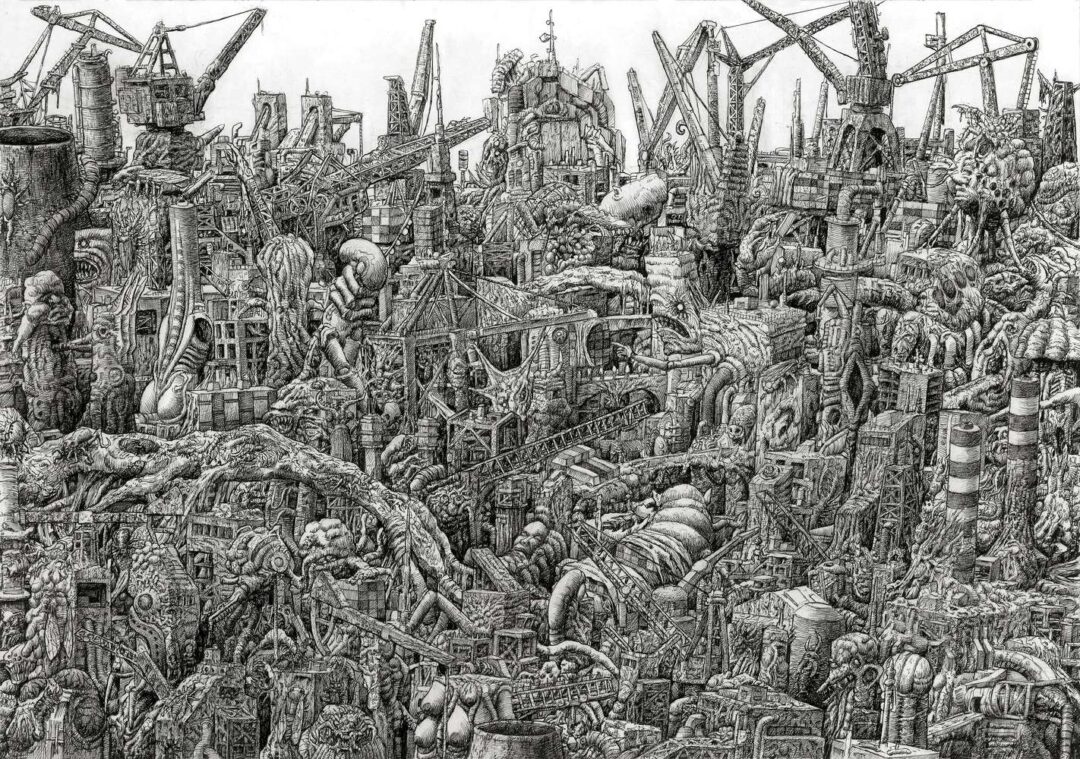
What does art mean to you and how does the public respond to your work?
At its core, I believe art functions as a mirror of the creator’s perceptions and psychological profile. It achieves this mostly through exaggeration — pushing an idea or a feeling to its limits so it can be revealed in its entirety. For example, my work portrays humanity in a pessimistic, one-sided way. Yet through this process — and through the voices of many viewers — the complexity of reality gradually emerges.
A major part of art for me is the creative process itself. I like to work with loud music. I paint, then get swept up by the song that’s playing as I study the piece. In those moments, my mind feels the most active, filled with emotions and ideas rushing through it. The artwork becomes a conduit for this energy. When the artistic process works well, I see myself in my most active — most alive — version.
With great joy, I’ve noticed that viewers often spend time with the works, studying them and getting lost in the micro-compositions and details. I can’t know what each person thinks, but many who connected deeply with my work told me they saw something familiar in its dystopia — something that paradoxically calmed them. A girl once told me she stumbled upon the works while frustrated, and as she examined the details, she somehow relaxed.
My piece for Plásmata 3 at the Onassis Foundation — an outdoor exhibition at Pedion tou Areos — gave me a broader view of the audience. People stopped, looked, and took photos. But the biggest fans were the children. They tried to touch the projected characters, see where they came from, where they disappeared to. Some shouted and talked to them; others danced to the sounds the figures produced. “Mom, there’s a creature living in the wall — it’ll come out again soon,” I remember a child saying.
The characters were mostly humorous, but even the more dystopian ones appealed to the kids. Perhaps this is because children don’t perceive fear the way adults do. My work relies on symbols — for example, I don’t show an actual photograph of entrails; I draw them. The lines themselves aren’t frightening — only the associations they evoke. Children don’t yet have the experiential references to connect what they see to reality, so they are not afraid.
*Interview by Dora Trogadi
Profile photo credits: George Leonidopoulos
TAGS: ARTS


